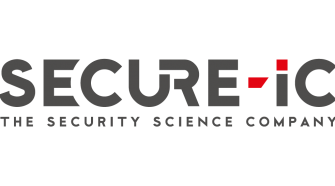From cameras to Chromebooks, infrastructure to interactive panels, Paul Garofano, Edgemont’s director of technology and information, reviewed the district’s remote and hybrid instruction, which he said have led to an increased dependence on technology over the last year and are impacting the district’s budget proposal for tech maintenance and upgrades in 2021-22.
“We went from zero to 100 overnight back in March,” said Garofano at the remote meeting of the Edgemont Board of Education Jan. 26. He said the district’s technology plan that was developed about four years ago, “prepared us for what we’re living in right now.”
“There’s an incredible amount of virtual collaboration that’s happening,” he said. “We’ve created an education space than can exist anytime, anywhere.”
Webcams and omni-directional microphones are now standard in classrooms. Interactive (Promethean) panels have become essential for remote instruction, but more are needed.
Chromebooks outfitted with Google’s “G-suite” software, another staple for K-12 instruction, provides students with access to documents, slides and ‘meet ups’ but the district must purchase more powerful Chromebooks to keep up with demand.
The district’s internet connectivity was upgraded this year to a 10-gigabyte network and an 800-megabyte bandwidth.
The district will continue to support professional development through instructional technology specialist Andrea Nash, who is working with teachers on a web-based resource library, and with self-directed learning and trouble shooting.
Faculty are attending “Tech Slams,” featuring instruction on best practices, as well as programs offered by the Scarsdale Teachers Institute and the Technology Leadership Institute.
The hybrid environment was not an ideal year to start a STEAM (Science Technology Engineering Art and Math) program at the junior high school, Garofano said, but teachers have pivoted, working with students on technology projects at home and in class. The department has discussed adding “medical detectives,” “green architecture” and “cybersecurity” into units at Edgemont Jr./Sr. High School next year.
The district also maintains a data privacy website and training program covering a cybersecurity overview and procedures for the academic community.
Funding sources for upgrades in infrastructure, equipment, STEAM and cybersecurity training come from the district’s technology budget, or are spread out over the years through installment purchase agreements, or qualify for a discount through E-Rate, a federal program that makes telecommunications and information services more affordable for schools and libraries.
Garofano proposed a total technology budget increase of 10% over last year’s $987,259, to $1,090,888 for 2021-22.
The projected expenditures in technology at Edgemont break down as follows: hardware, 8.5%; Chromebooks, 8.5%; infrastructure, 9.6%; software, 16.9% and tech support from LHRIC, the Lower Hudson Regional Information Center, 56.5%. More than half of the district’s technology budget is spent on services provided by LHRIC a division of BOCES, which provides Edgemont with tech support, internet service, maintenance backup and recovery systems. A large portion of the cost for LHRIC services is reimbursed by New York State.
Curriculum and instruction
Michael Curtin, director of curriculum and instruction, reviewed current and future project development in curriculum and instruction, noting that planning and budgeting for those programs have only recently resumed after the COVID-19 pandemic halted normal administrative activity last spring. Many unknowns remain, he said, including state and federal aid.
“All of these uncertainties make it difficult to construct a spending plan,” Curtin said. “Turning the corner, we still may be wearing masks. We don’t know what protocols will have to be followed and what issues we’ll have to deal with.”
With an emphasis on independent learning and a renewed focus on developing student independence and executive function, however, Curtin did present significant new budget additions for instructional programs in 2021-22 that include elementary writing (Teachers College Units of Study, $21,360), common math assessment (grades 3-6, $6,480), Science21 for grade 4 ($6,800), and Words Their Way for grade 4 (cost to be determined).
To date, the budget estimate for curriculum and instruction for 2021-22 is $165,815, a net increase of $4,300 (+3%) over the budget for 2020-21, which was $161,475.
The 2021-22 budget information presented at the district’s Jan. 26 board of education meeting is available on replay at https://bit.ly/39LJFdr.
The next virtual meeting of the Edgemont Board of Education will take place Tuesday, Feb. 9, at 8 p.m.












